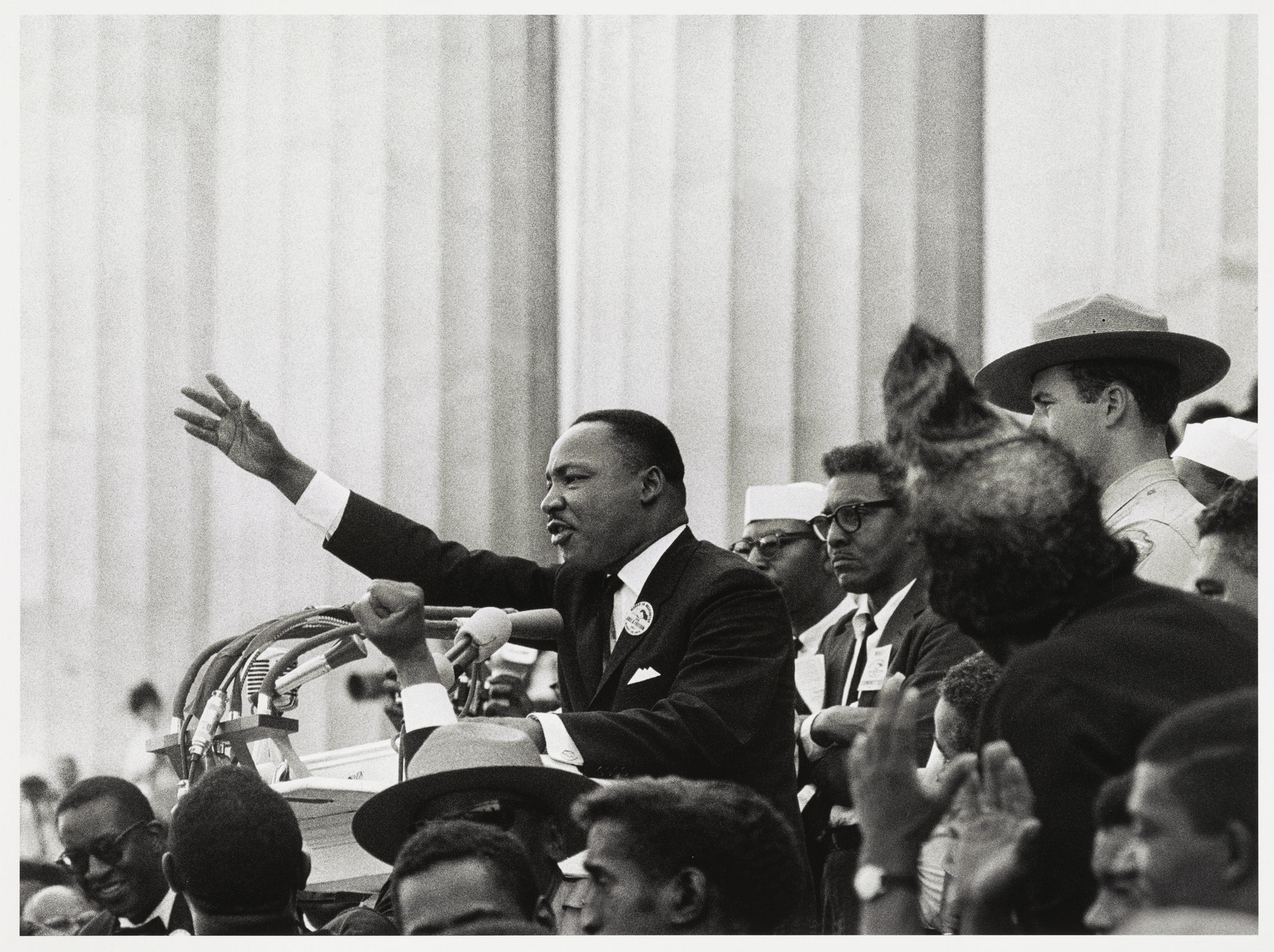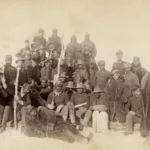Martin Luther King Jr. and the Historic March on Washington
More News /Article
- Texas redistricting ruling upends candidates’ plans for 2026
- Trump attacks ABC News correspondent Mary Bruce in angry response to three sharp questions
- Court strikes down Texas map in setback for Trump over racial gerrymandering
- Trump attacks ABC News correspondent Mary Bruce in angry response to three sharp questions
Dr. King delivering his iconic “I Have a Dream” speech.
Credit: Photo by USIA (NARA), Public Domain via Flickr
On August 28, 1963, over 250,000 people gathered in Washington, D.C., for one of the most significant civil rights demonstrations in American history—the March on Washington for Jobs and Freedom. The event became a defining moment in the struggle for racial equality and is best remembered for Dr. Martin Luther King Jr.’s iconic “I Have a Dream” speech.
The Purpose of the March
The march was organized by civil rights leaders, including Dr. King, John Lewis, A. Philip Randolph, Bayard Rustin, and others, with a dual focus on advocating for racial justice and economic equality. Despite the landmark Brown v. Board of Education ruling in 1954 that declared segregation in schools unconstitutional, African Americans still faced widespread discrimination in employment, housing, voting rights, and public accommodations.
The key demands of the march included:
- A comprehensive civil rights bill to end segregation.
- Voting rights protections for all citizens.
- Equal job opportunities and a federal minimum wage.
- Desegregation of public schools.
A Peaceful Demonstration of Unity
On that historic day, a massive and diverse crowd—Black and white, young and old—gathered at the Lincoln Memorial in an unprecedented show of unity. The event featured performances by artists like Mahalia Jackson, Bob Dylan, and Joan Baez, as well as speeches from labor leaders, activists, and civil rights pioneers.
Among the many speakers was John Lewis, then a young leader of the Student Nonviolent Coordinating Committee (SNCC), who delivered a passionate call for immediate action against racial injustice.
Dr. King’s “I Have a Dream” Speech
The highlight of the march was Dr. King’s electrifying speech, delivered on the steps of the Lincoln Memorial. He spoke of his dream of a nation where people would be judged “not by the color of their skin, but by the content of their character.” His words resonated across the country, reinforcing the urgency of the civil rights movement.
King’s speech invoked America’s founding principles of freedom and equality, referencing the Declaration of Independence and the Emancipation Proclamation. His powerful repetition of the phrase “I have a dream” turned his message into a rallying cry for justice, inspiring millions and solidifying his role as the movement’s moral leader.

The Impact of the March
The March on Washington is credited with accelerating the passage of landmark civil rights legislation. Less than a year later, in 1964, the Civil Rights Act was signed into law, outlawing segregation in public places and prohibiting employment discrimination. The following year, the Voting Rights Act of 1965 was passed, ensuring that racial discrimination in voting would no longer be tolerated.
Beyond its legislative impact, the march proved the power of nonviolent protest and mass mobilization. It demonstrated that peaceful demonstrations could bring about real social and political change.
Legacy and Inspiration
The March on Washington remains one of the greatest moments in American history and continues to inspire movements for justice, equality, and human rights. Dr. King’s message of hope, unity, and perseverance still resonates today, reminding us that the fight for justice is ongoing.
Each year, on Martin Luther King Jr. Day, Americans honor his legacy by reflecting on his dream and working toward a more just and equal society. The steps of the Lincoln Memorial, where he delivered his speech, serve as a lasting symbol of the struggle for freedom and equality.
As Dr. King said that day:
“Let freedom ring from every mountainside… and when this happens, we will be able to speed up that day when all of God’s children… will be able to join hands and sing in the words of the old Negro spiritual: ‘Free at last! Free at last! Thank God Almighty, we are free at last!’
More News /Article
- Texas redistricting ruling upends candidates’ plans for 2026
- Trump attacks ABC News correspondent Mary Bruce in angry response to three sharp questions
- Court strikes down Texas map in setback for Trump over racial gerrymandering
- Trump attacks ABC News correspondent Mary Bruce in angry response to three sharp questions





